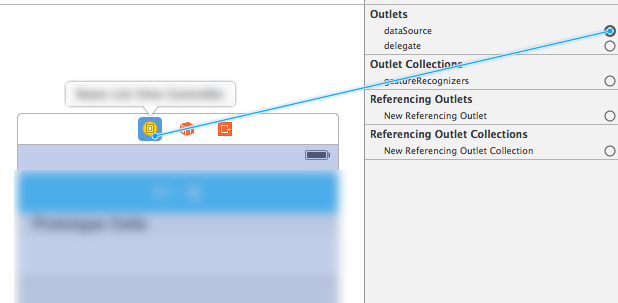まず、前提としてUITableViewControllerではなく、UIViewControllerにTableViewを配置したやり方
1、UIViewController内にTableView1つ
2、そして配置されたTableViewの中にTable View Cellを1つ配置する
3、プロパティ必須編集箇所はTable View Cellのidentifierに名前を定義しときます。※今回は"myCell"
4、Table Viewのデータソース と デリゲート を自UIViewControllerに紐付けする
参考画像以下

これでStoryBoard内の操作は終わりです。次はクラス内のコードです
①
クラスの先頭
class testViewController: UIViewController, UITableViewDataSource, UITableViewDelegate {
このようにUIViewControllerの後にUITableViewDataSource, UITableViewDelegateといれます。
②
func tableView(tableView: UITableView, cellForRowAtIndexPath indexPath: NSIndexPath) -> UITableViewCell {
var cell = tableView.dequeueReusableCellWithIdentifier("myCell", forIndexPath: indexPath) as UITableViewCell;
cell.textLabel?.text = "\(indexPath.row)";//セルに表示する内容
return cell;
}
func tableView(tableView: UITableView, numberOfRowsInSection section: Int) -> Int {
return 3;//何個セルを表示するか
}
func tableView(tableView: UITableView, didSelectRowAtIndexPath indexPath: NSIndexPath) {
//セル押下イベント
println("\(indexPath.row)番目のセルが押されました");
}
コピペして終わりです表示結果
0
1
2
return 5;とやれば
表示結果
0
1
2
3
4
となります。
最後に注意事項
cell.textLabel.text = "メインテキスト";の他に
cell.detailTextLabel.text = "サブテキスト";・・・っとサブタイトルをつけることができます
※ただし、Table View Cellのスタイルを変更しなければエラーが出るので要注意